The drop ceiling, also known as a suspended or false ceiling, is a secondary ceiling system hung below the main structure by a metal grid. While traditionally associated with commercial buildings and utilitarian basements, modern design has fully embraced this feature as a highly aesthetic and functional element.
It excels at concealing unsightly pipes, wires, and ductwork while providing easy access for maintenance—a necessity for many kitchen remodel ideas or basement conversions.
Today’s drop ceilings offer incredible variety in materials, textures, and installation patterns. Forget the old, plain white mineral fiber tiles; here are 21 contemporary drop ceiling ideas that turn a functional necessity into a stunning design statement.
The Grid System: Materials and Finishes
The most visible part of a drop ceiling is the tile itself. These ideas focus on selecting unique materials that enhance the room’s style and offer practical benefits like noise reduction or moisture resistance.
1. Faux Tin or Metal Tiles

Credits: @ceilingtilesbyus
Replace standard tiles with decorative metal panels or faux tin PVC tiles. Available in intricate Victorian patterns or sleek hammered finishes, these add a touch of antique glamour and are perfect for a classic kitchen or a cozy coffee station.
2. Wood-Look or Faux Wood Planks
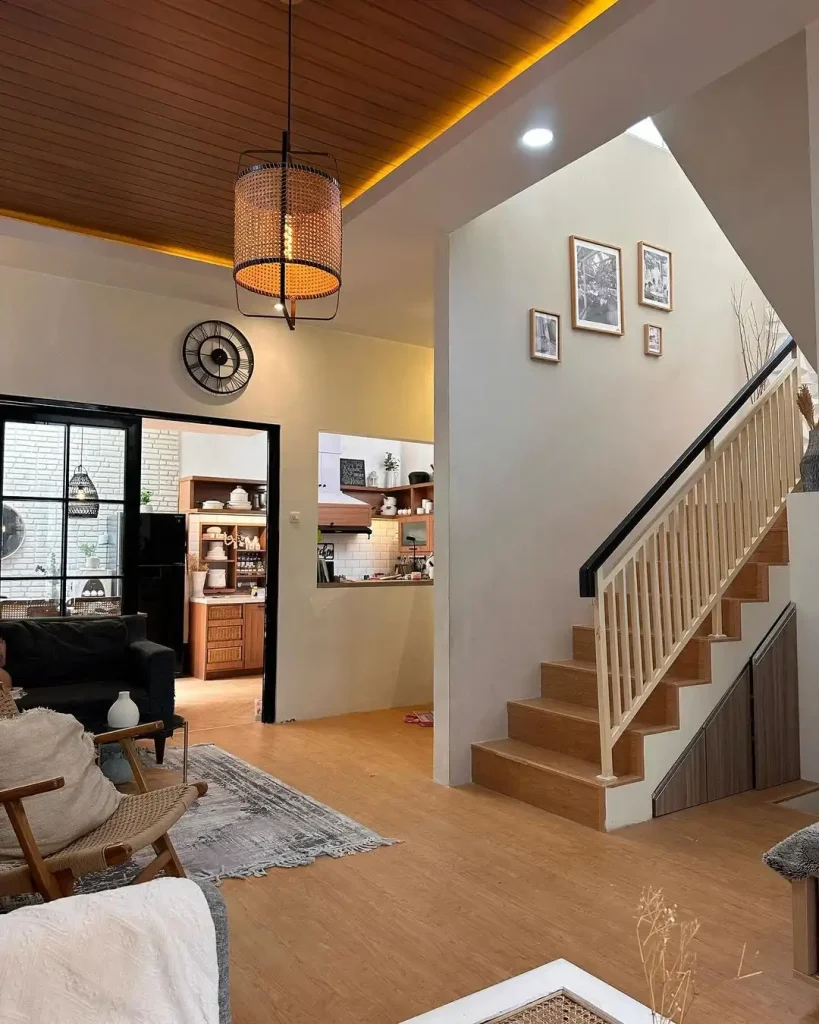
Credits: @duma.wpc
For a warm, natural feel without the weight of real timber, choose wood-look planks or tiles made from mineral fiber or PVC. This mimics the cozy look of a wood plank ceiling and is ideal for a basement family room or a rustic office.
3. Smooth, High-Acoustic Mineral Fiber
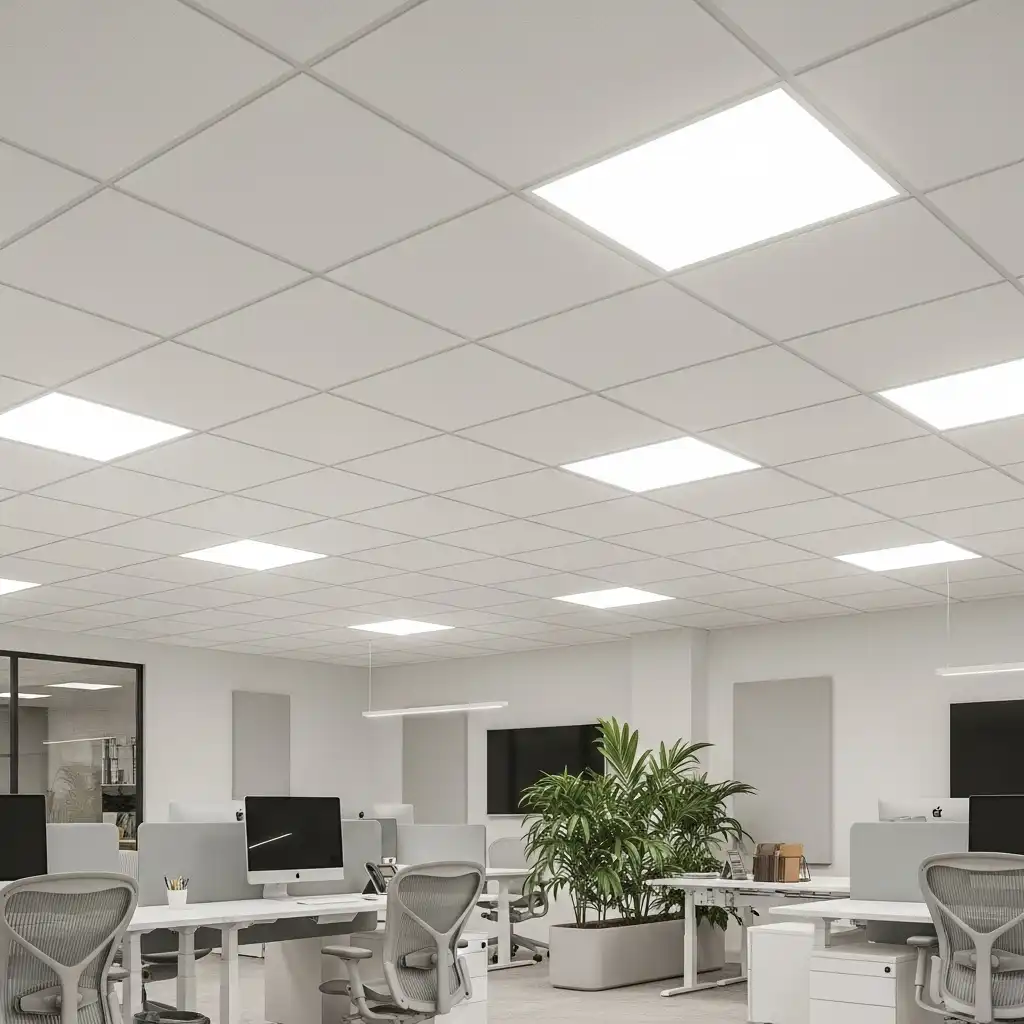
Opt for premium, smooth-faced mineral fiber tiles. Unlike the basic fissured tiles, these offer excellent sound absorption (critical for noisy basements or open-plan areas) while providing a clean, monolithic, painted drywall look.
4. Geometric Patterned Tiles
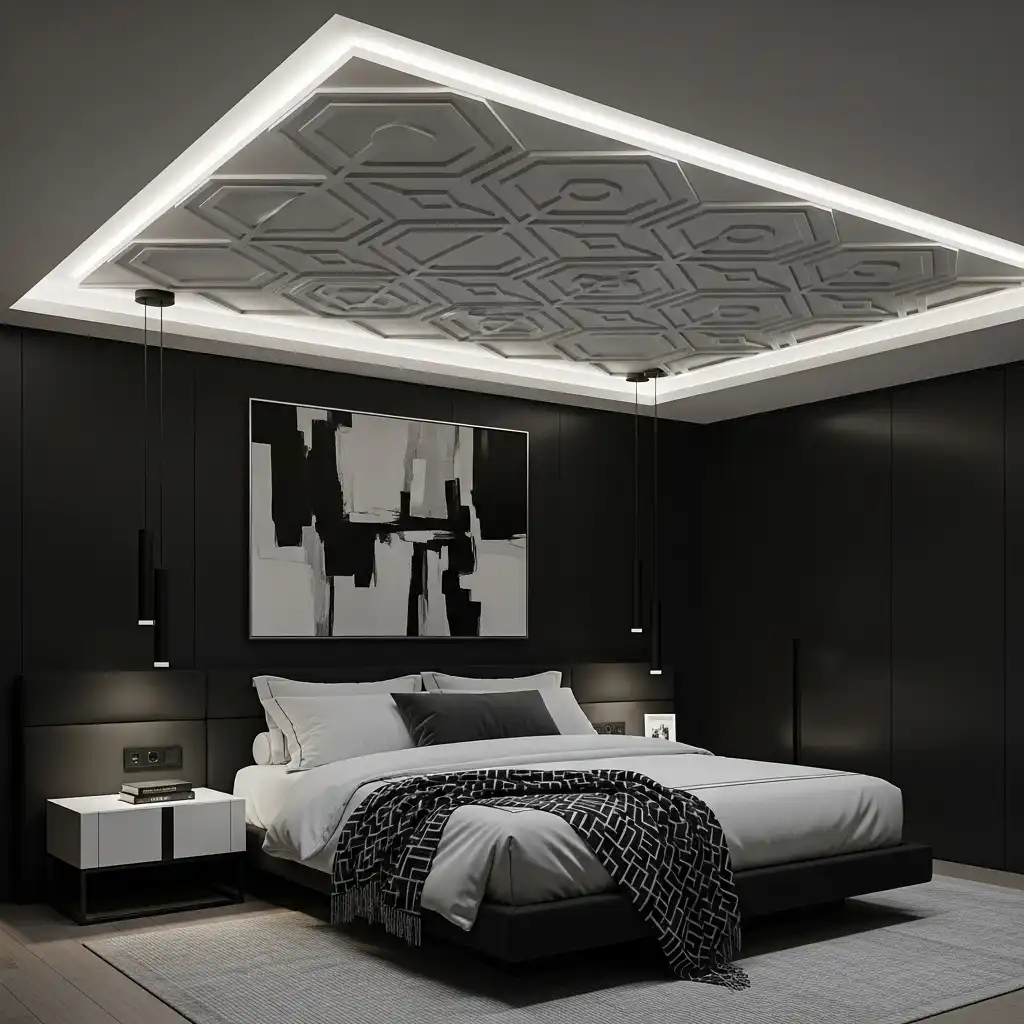
Modern drop ceilings often feature raised or carved geometric patterns—squares, hexagons, or abstract designs—that add subtle texture and visual interest. This elevates the ceiling to an architectural feature, working well in sophisticated black and white bedroom ideas.
5. Acoustical PET Felt Panels
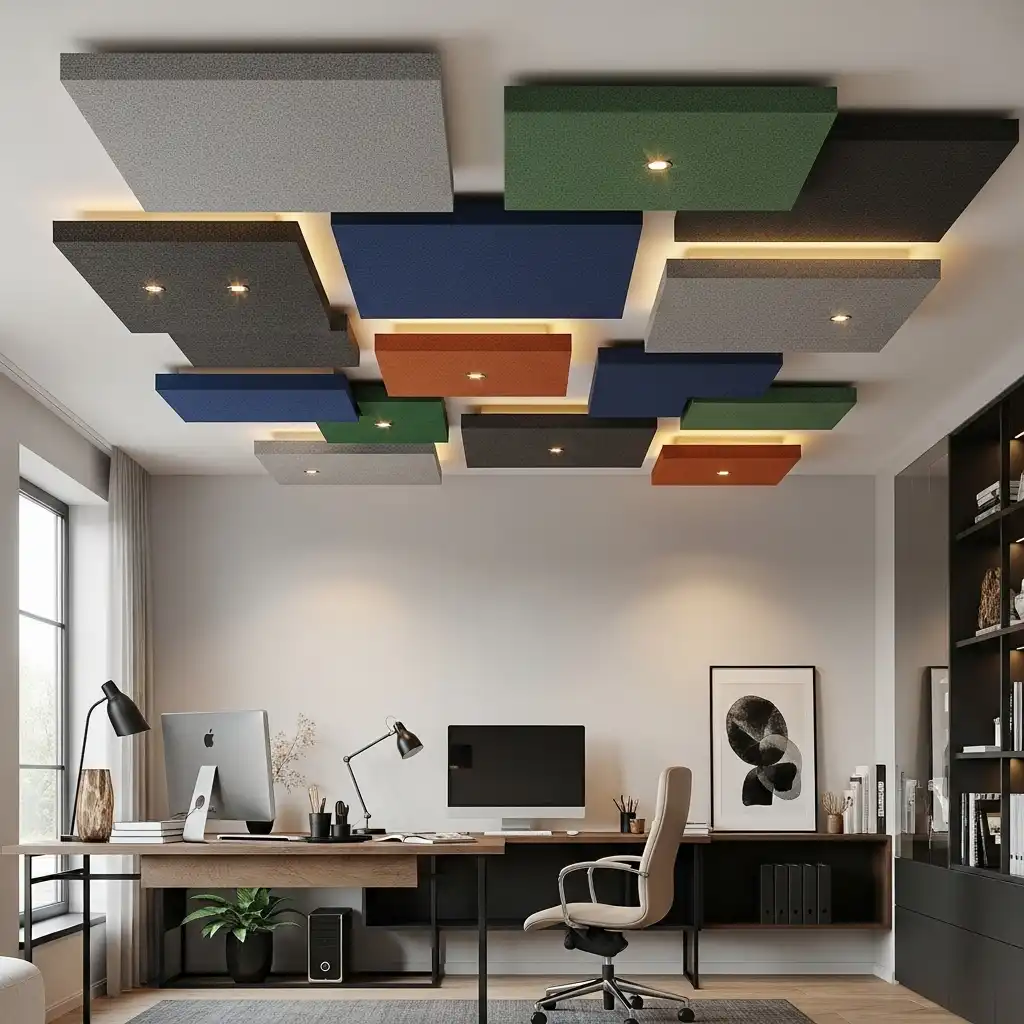
Use modern tiles made from PET felt (recycled plastic). These soft panels come in a variety of vibrant or muted colors and offer superior sound-dampening qualities, making them popular in home office ideas or home theaters.
6. Transparent or Translucent Panels
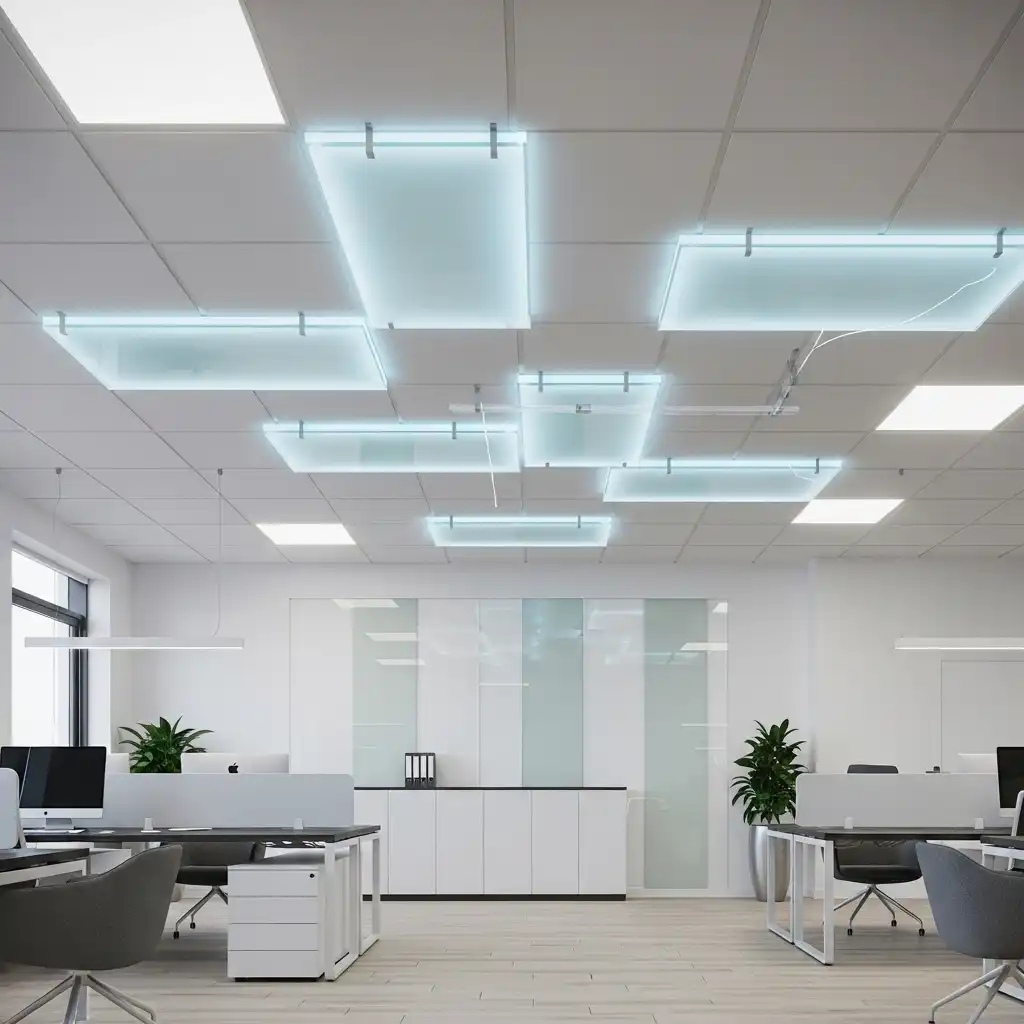
Incorporate a few transparent acrylic or frosted glass-look panels in strategic spots. When backlit, these create a beautiful luminous ceiling effect, adding an ethereal, modern glow.
7. PVC Panels for High-Humidity Areas
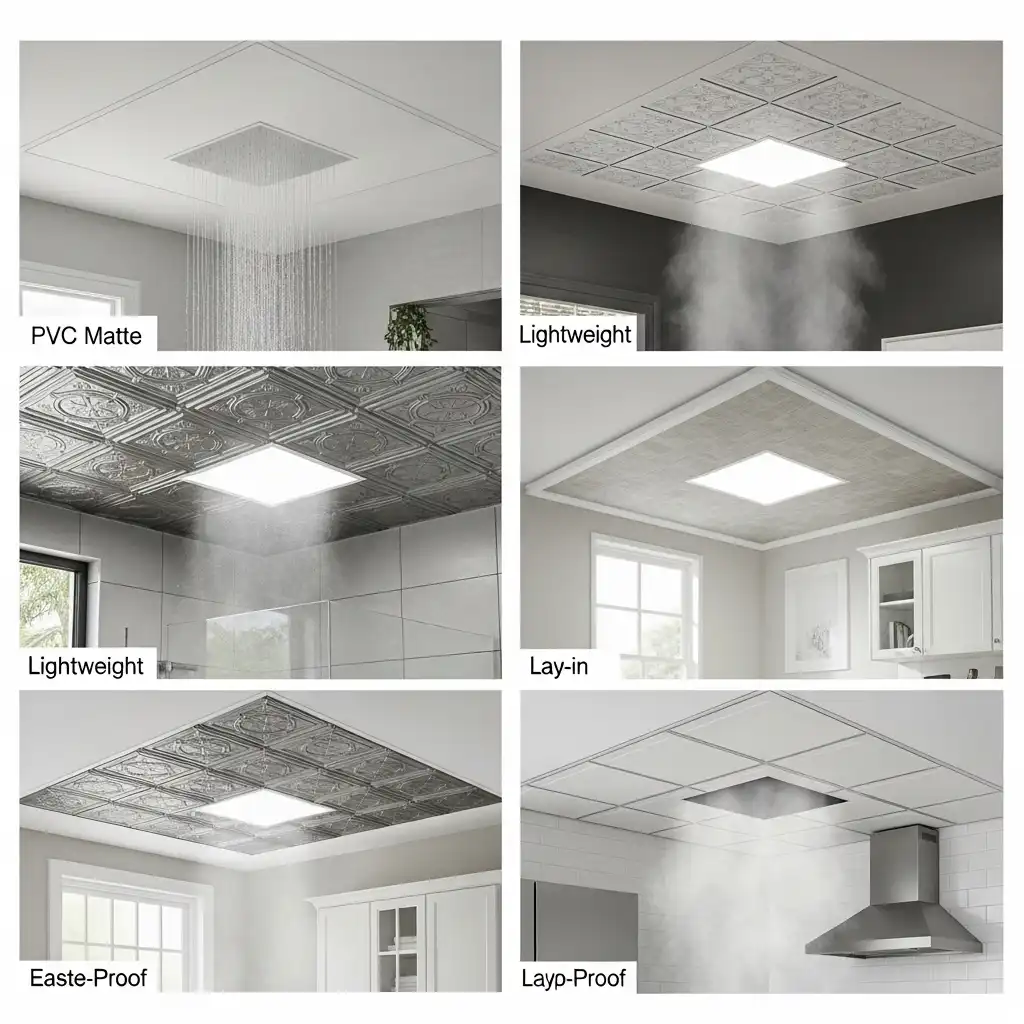
For kitchens, bathrooms, and laundry rooms, PVC panels are ideal. They are lightweight, completely moisture-resistant, and easy to clean, preventing the mold or warping issues that can affect other materials in high-humidity zones.
Architectural & Design Techniques
These ideas focus on how to use the grid and the tile layout to create custom effects, spatial definitions, and dramatic visual impact.
8. Concealed Grid System (Minimalist Look)
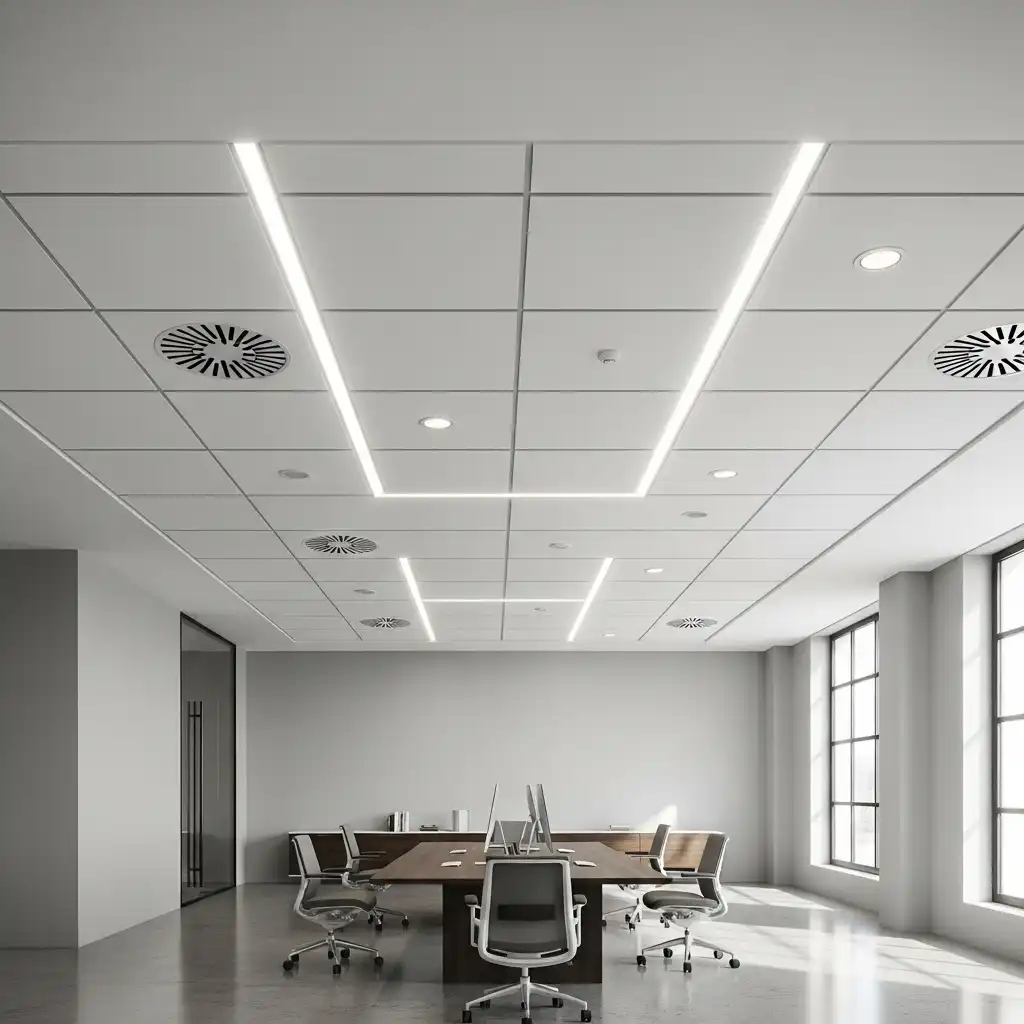
Instead of the standard exposed T-bar grid, select tiles that install into a narrow, concealed grid system. This minimizes the visible seams, achieving a clean, near-seamless appearance that mimics a high-end, smooth ceiling.
9. Custom Color Grid and Tiles
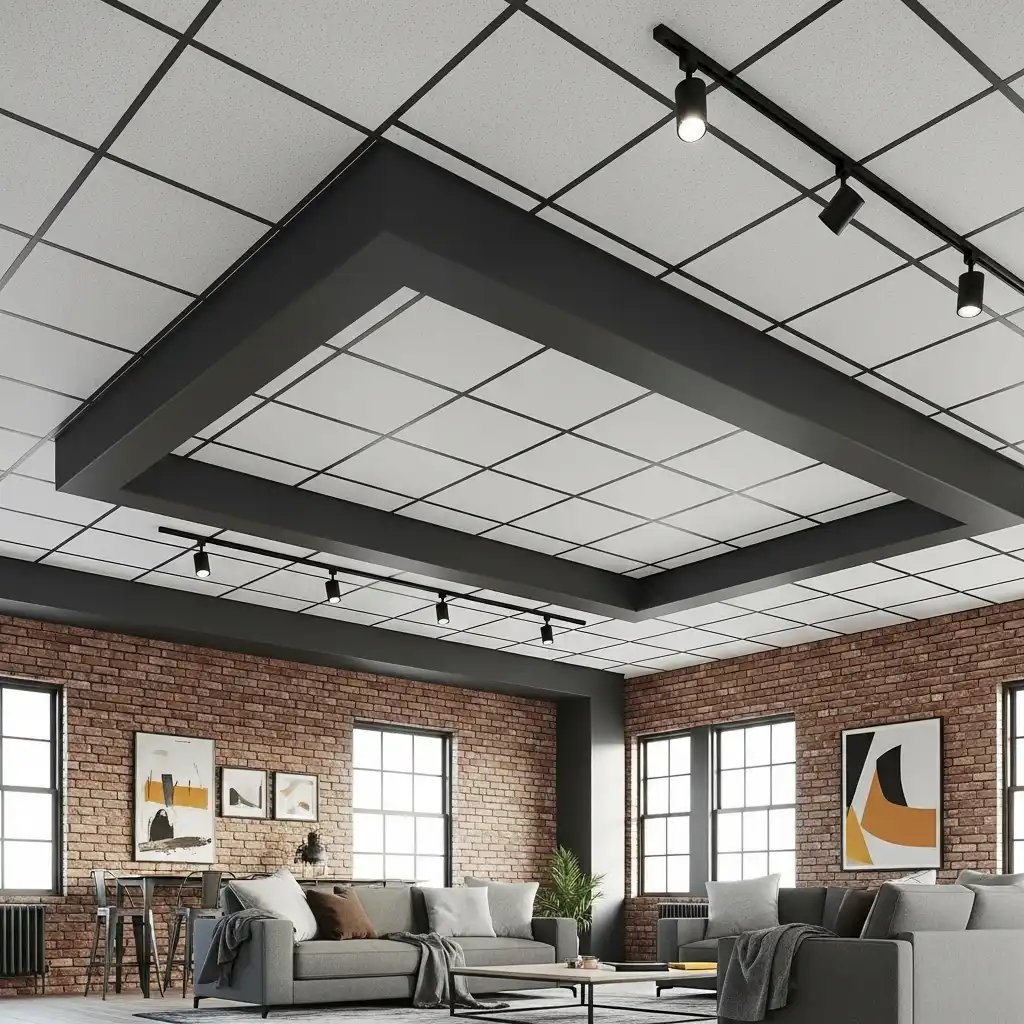
Forget the white grid. Paint the metal grid a dark color (like black or charcoal) and use white or light-colored tiles. This creates a crisp, grid-like pattern that defines the ceiling and adds an industrial, modern edge. Alternatively, paint both the grid and the tiles a single bold color.
10. Tiered or Layered Ceilings
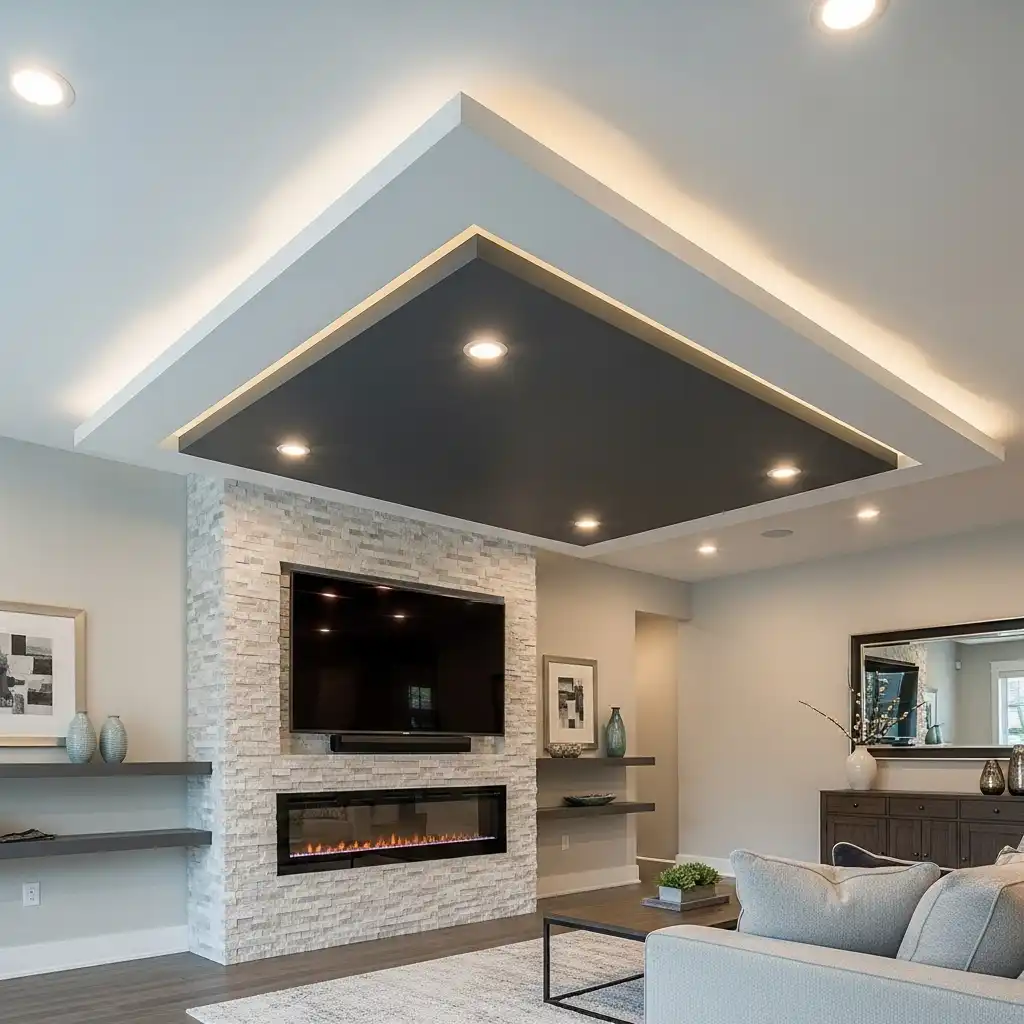
Use the drop ceiling structure to create multiple levels. Drop a ceiling section over a specific area (like an electric fireplace or a kitchen island) to define that zone, while keeping the surrounding area higher for contrast.
11. Circular or Curved Designs
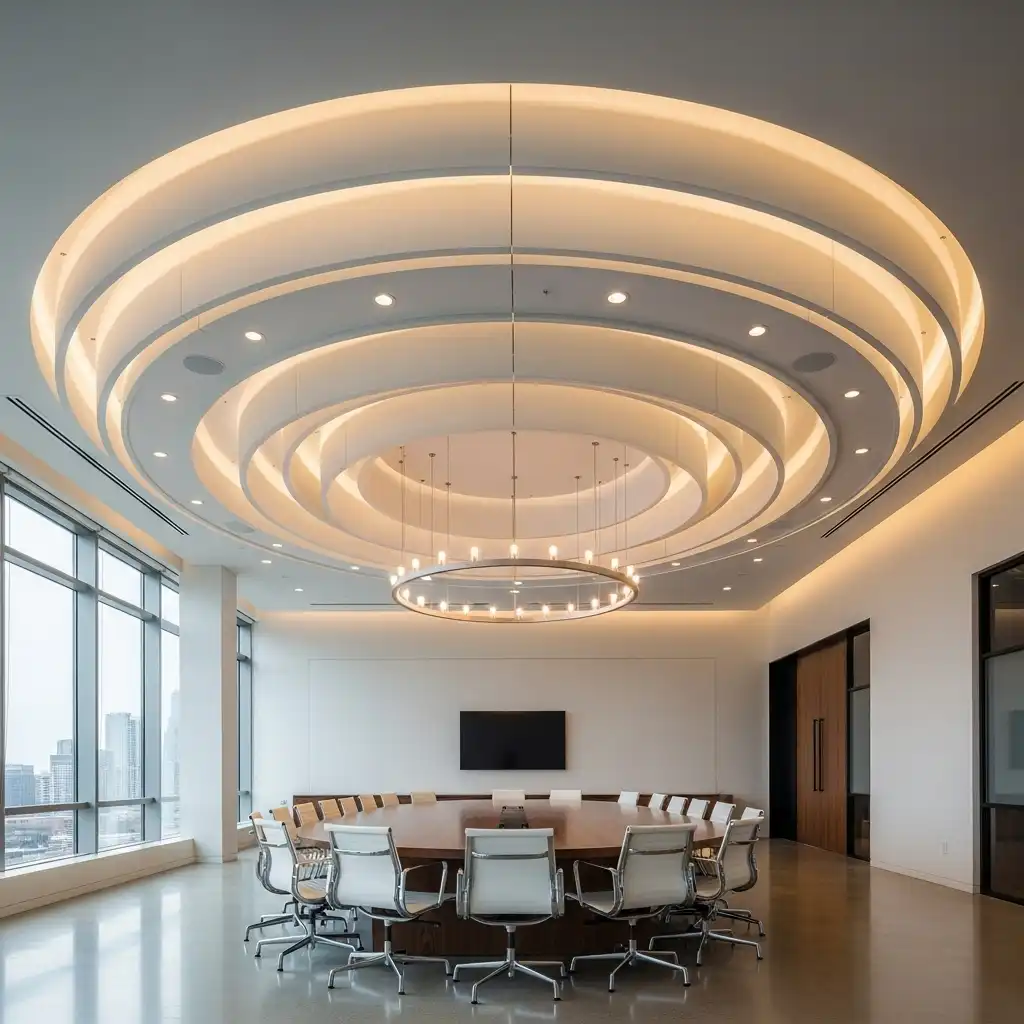
In larger rooms, use specialized panels and suspension systems to create a circular or organically curved drop ceiling feature. This softens the lines of the room and is a high-end architectural move.
12. Perimeter Drop with Cove Lighting
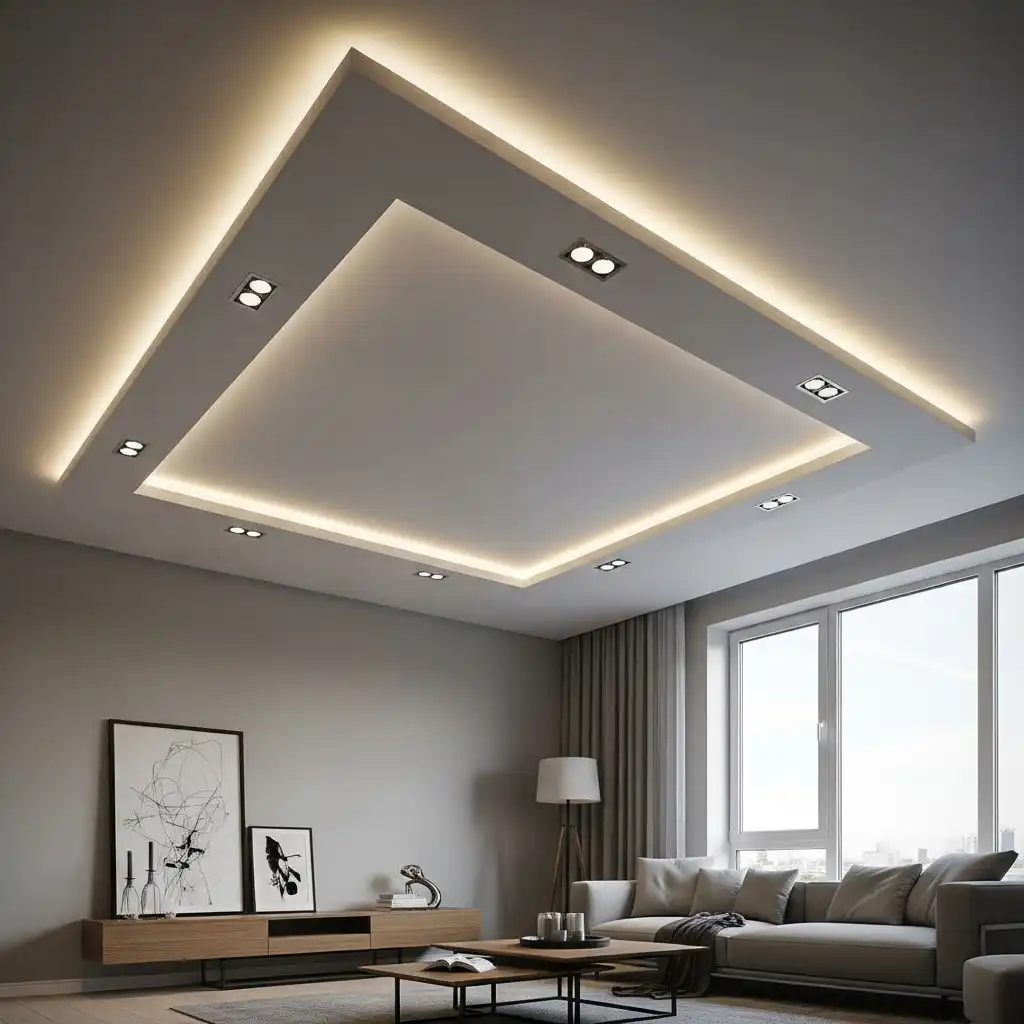
Install a drop ceiling border only around the perimeter of the room, leaving the center at the original height. Install hidden LED strip lighting above the dropped border to cast a beautiful, subtle cove light glow upwards onto the central ceiling area.
13. Drop Beams Instead of a Full Ceiling
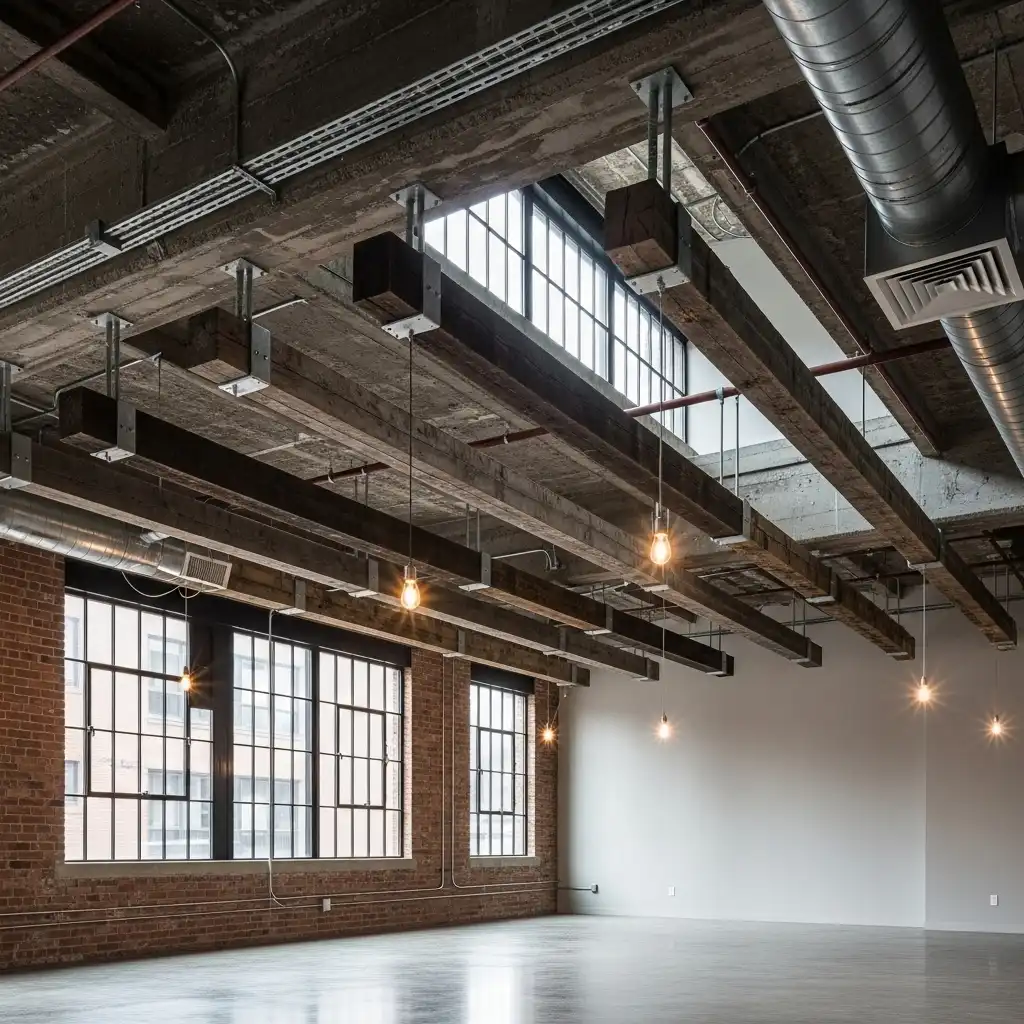
For a loft or industrial space, hang thick, decorative ‘drop beams’ (faux or real) from the ceiling structure. This partially obscures pipes and ducts while maintaining maximum height and creating an attractive, textured ceiling element, similar to many wood beam ideas.
Lighting & Integration
The space above the drop ceiling is perfect for housing sophisticated lighting systems, moving beyond simple fluorescent tubes.
14. Integrated Recessed Lighting
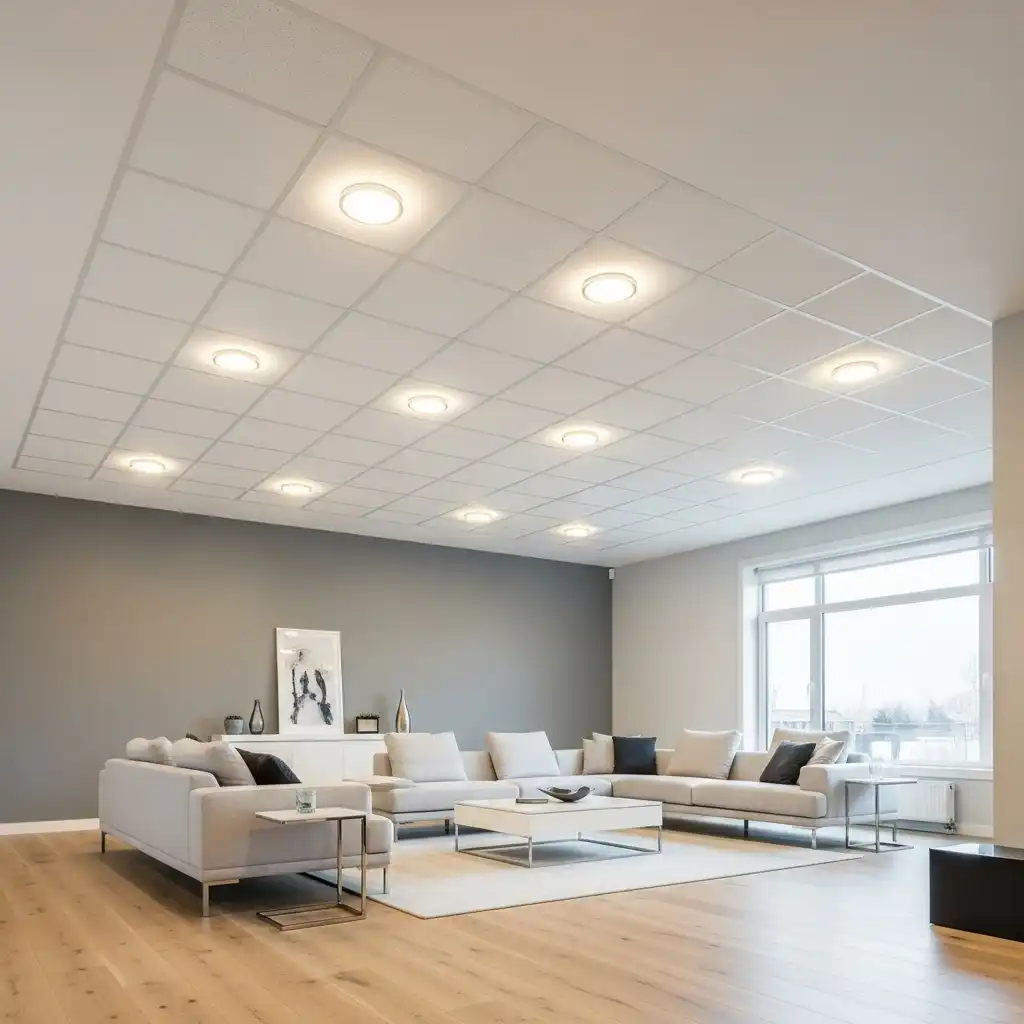
The space provided by the drop ceiling allows for easy installation of recessed can lighting. This provides clean, bright, uniform illumination without the need for hanging fixtures, an essential element for an open-concept living room.
15. Modular Light Panel Replacement
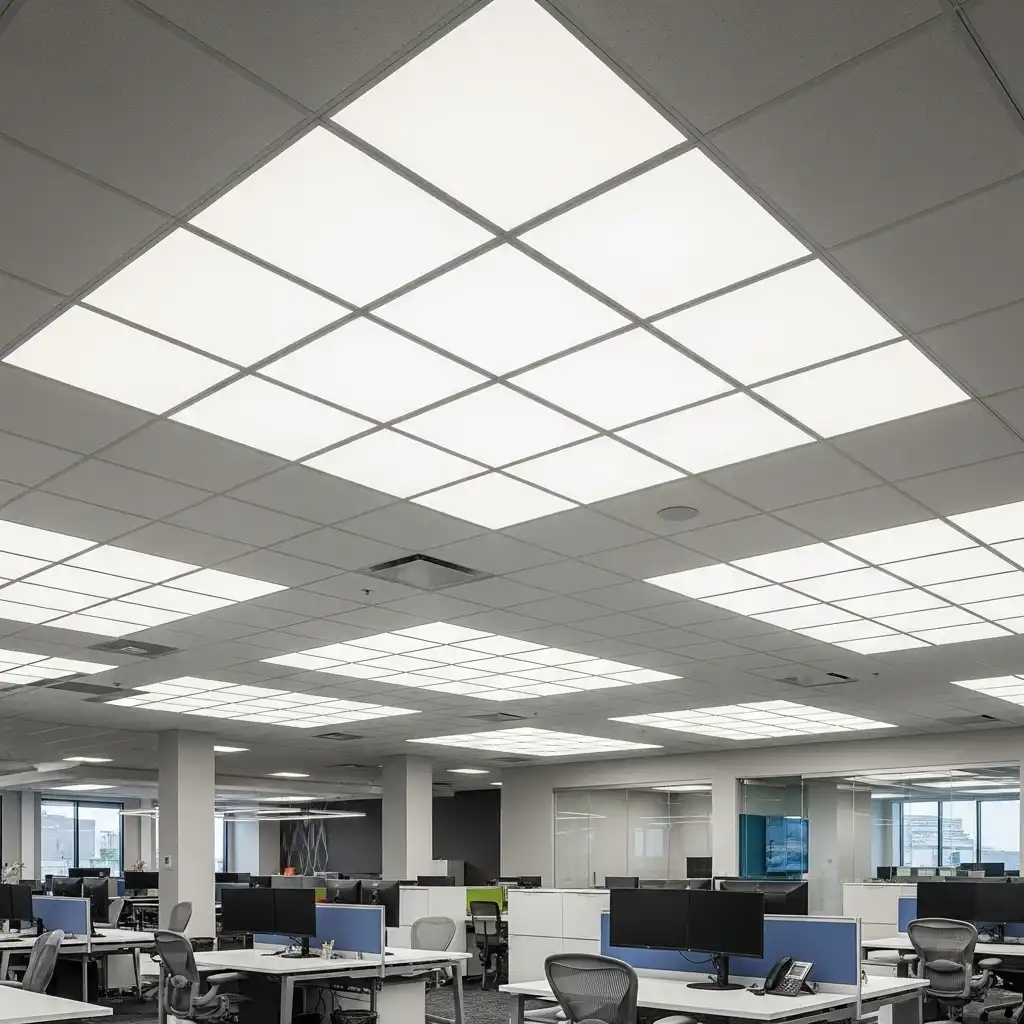
Replace select ceiling panels with specially designed light panels. These diffuse light across a wide area, providing excellent ambient light without the harsh glare of traditional fixtures.
16. Hanging Statement Lighting

Use the structure above the drop ceiling to securely mount heavy chandeliers or pendant lights. Cut a hole in the ceiling panel to allow the fixture to hang down, making it the elegant focal point of the room.
17. Track Lighting on the Grid
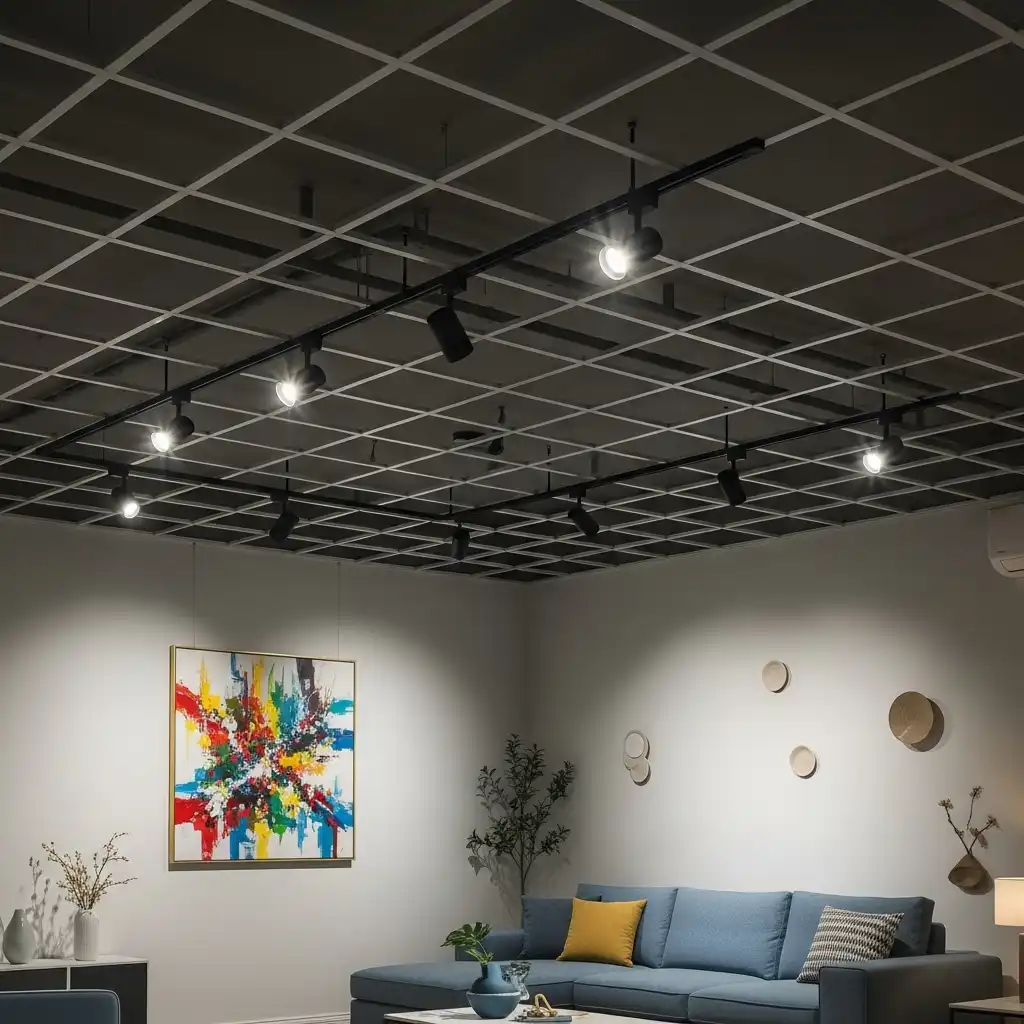
For a modern, flexible solution, mount low-profile track lighting directly onto the exposed metal grid lines. This allows you to easily adjust the light direction to highlight living room wall art or seating areas.
18. Backlit Geometric Cutouts
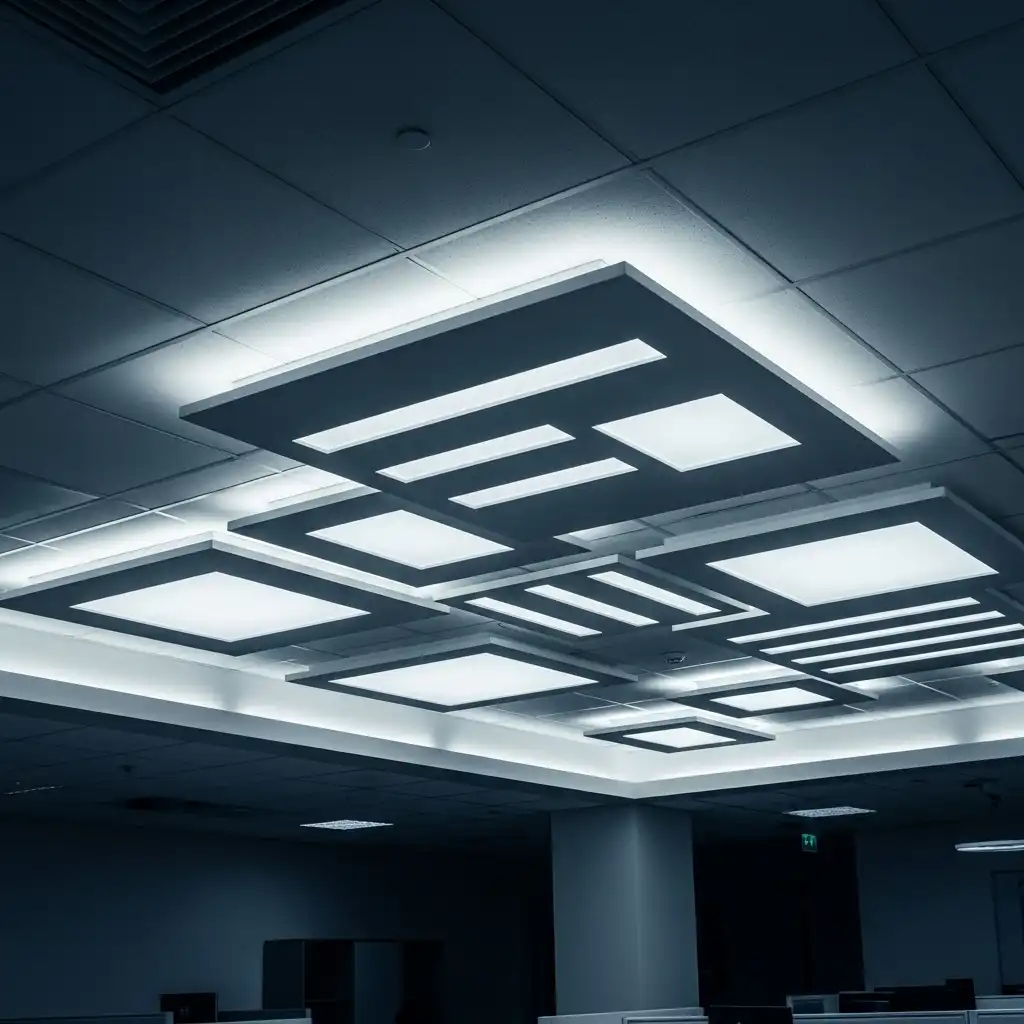
Create a custom effect by installing drywall panels with geometric cutouts (squares, stripes) and mounting them under the drop ceiling. Backlight the cutouts with LED strips to create floating light elements.
19. Accent Color in the Recessed Area
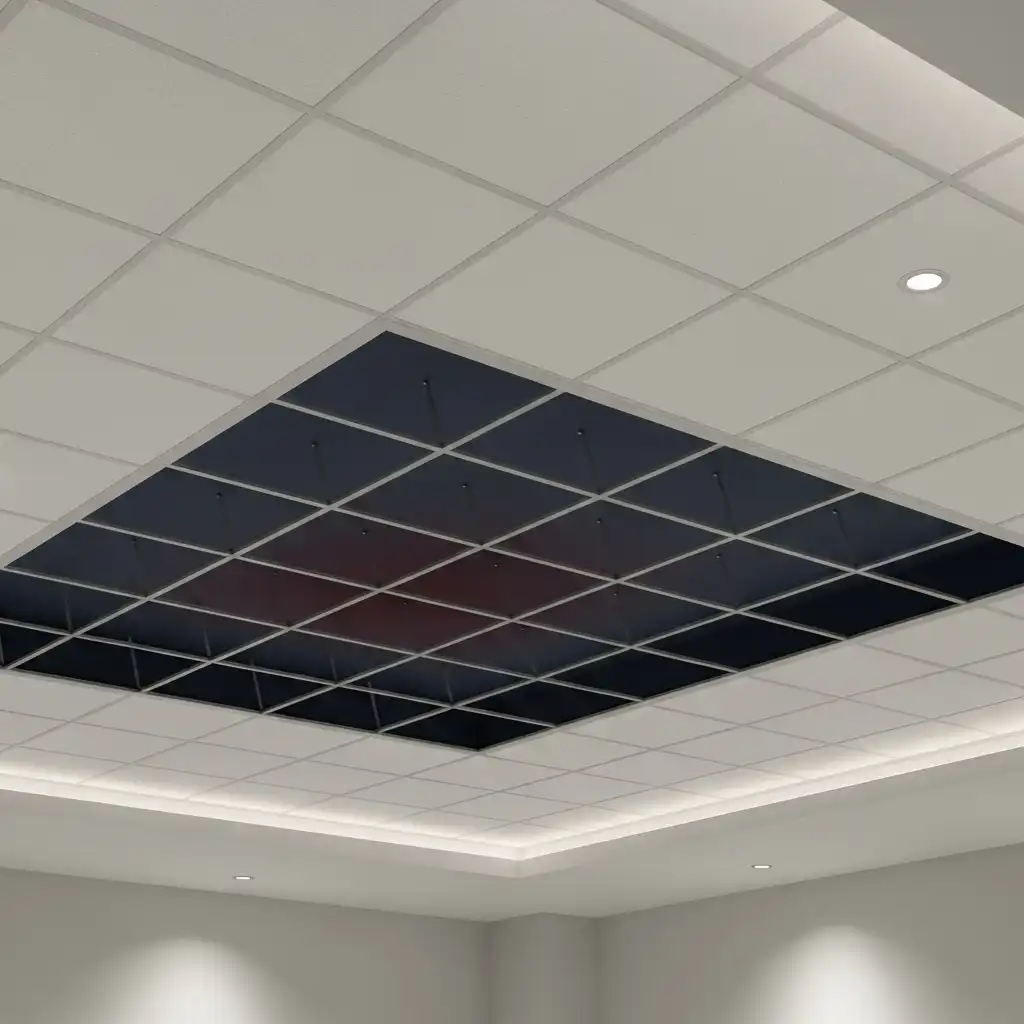
If you have a reveal edge or tegular tile (one that hangs slightly below the grid), paint the area behind the tile grid a contrasting dark color. This gives the ceiling the illusion of greater depth and makes the tiles pop.
20. Stamped Ceiling Medallions
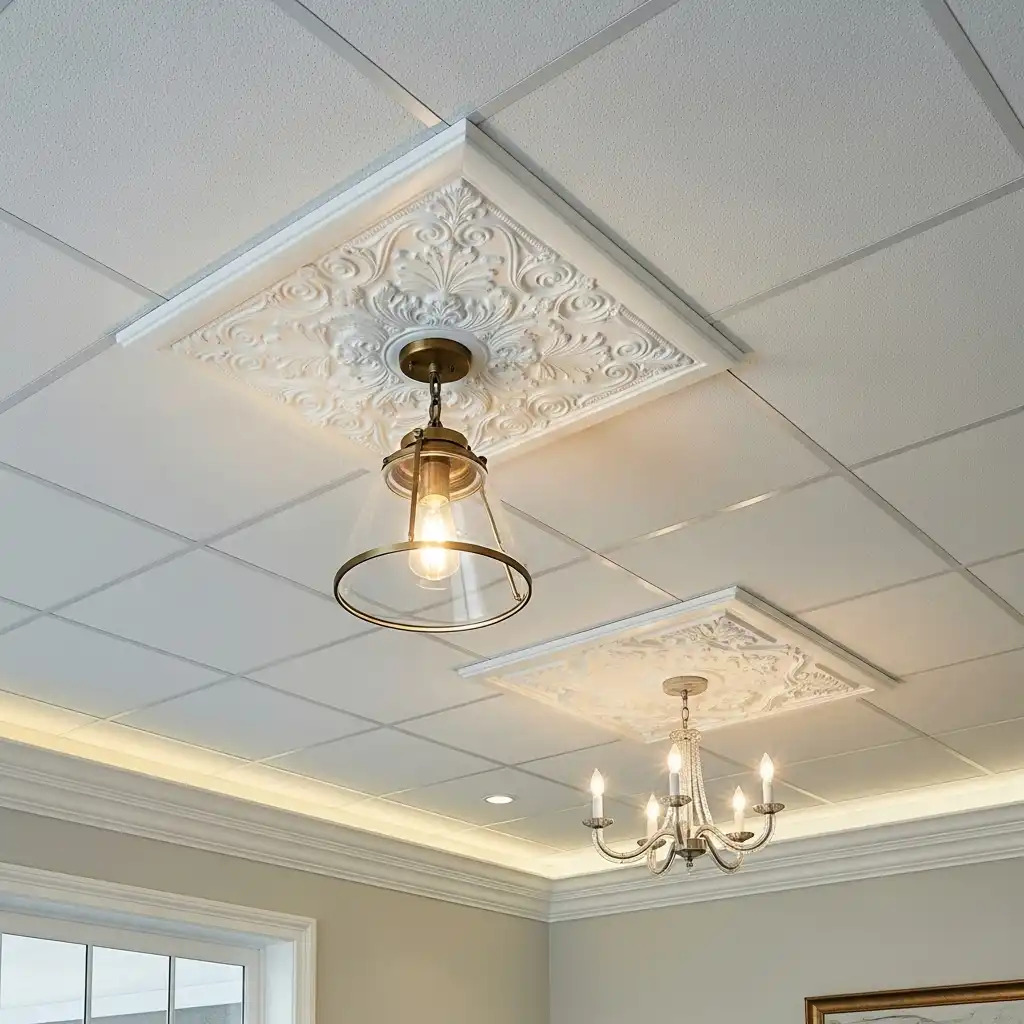
Add a classic touch by using glue-up, lightweight ceiling medallions (often faux plaster or polyurethane) around any pendant or chandelier opening. This small detail adds instant elegance and character.
21. Utilizing the Grid for Zoning
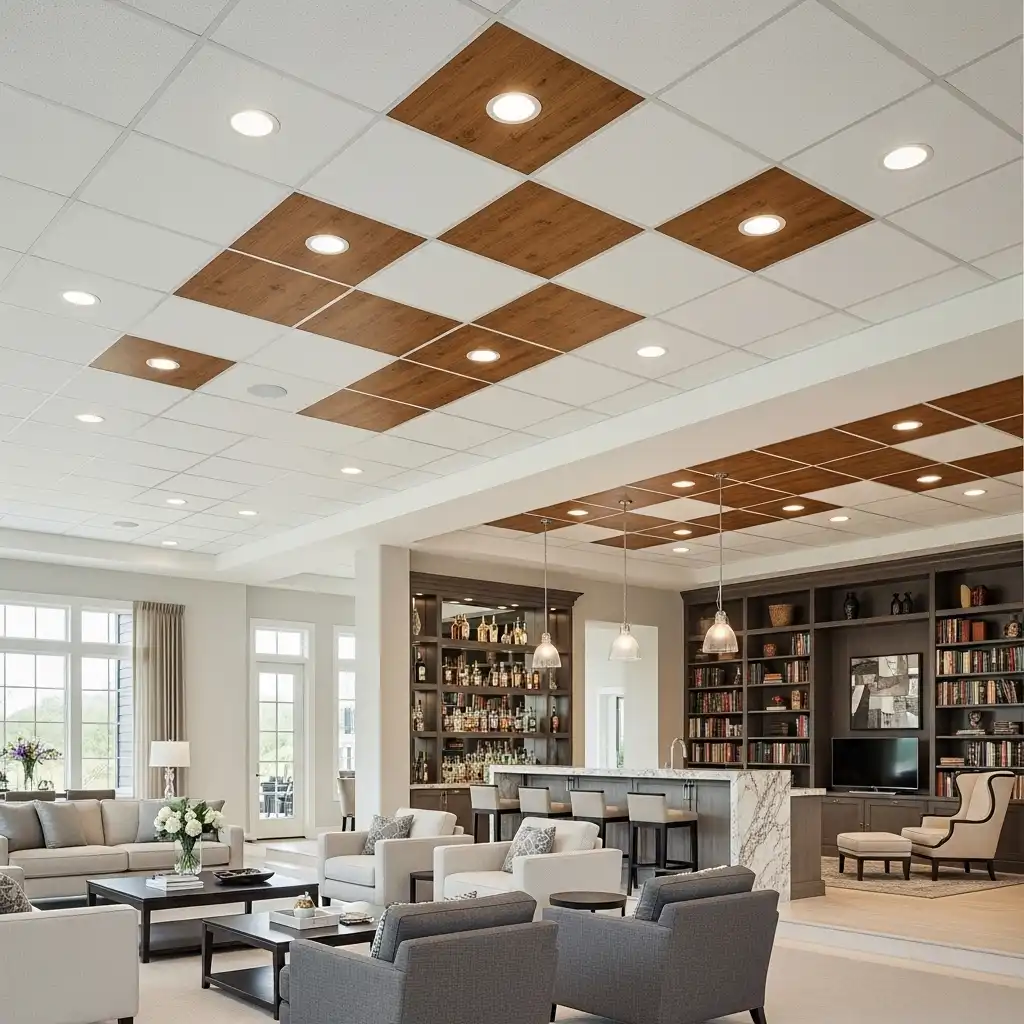
In large, open areas, use the drop ceiling grid to subtly define functional zones. For example, use a white grid with smooth tiles over the main seating area and switch to faux wood tiles within the same grid structure over the bar or home library area.
Conclusion
Modern drop ceilings have shattered their reputation as a strictly functional feature. By embracing new materials, creative lighting, and clever installation techniques, the suspended ceiling is now a powerful design tool capable of delivering warmth, style, and essential utility concealment. It’s an effective and affordable way to finalize your space with a custom, high-end look.
FAQ
What is the difference between a drop ceiling and a false ceiling?
They are the same thing. “Drop ceiling” or “suspended ceiling” refers to the system’s installation method (hanging below the main structure), while “false ceiling” refers to the fact that it is a secondary, non-structural layer.
Can I install a drop ceiling myself?
Yes. Modern drop ceiling grid systems are designed to be relatively simple for a handy homeowner to install, particularly in smaller, square rooms like basements. Complex layouts or large areas may benefit from professional installation.
Do drop ceilings reduce ceiling height too much?
A standard drop ceiling system requires only about 3 to 6 inches of vertical space. If your existing ceiling is low (e.g., under 8 feet), you should consider a direct-mount or surface-mount panel system to minimize height loss.




